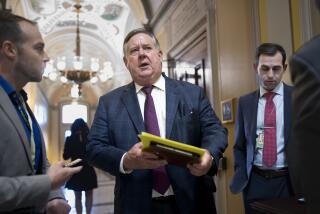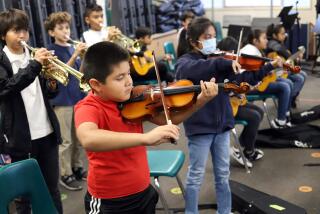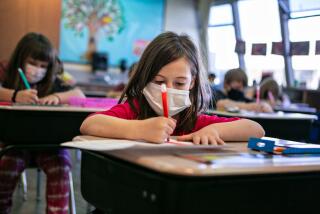Lawmakers’ Back-Home College Funding Up 60%
- Share via
A study released today found the amount of federal grant money lawmakers steered to colleges in their home districts rose 60% this year. Critics say the figure shows politicians are more concerned about pet projects than education.
Congress approved $1.7 billion--the largest amount ever--for special projects ranging from renovating laboratories to historical research, according to an analysis by the Chronicle of Higher Education.
The amount last year was just over $1 billion.
Critics in the academic community say the directed grants, called earmarks, can be wasteful because lawmakers are interested primarily in their own states and cannot evaluate a project’s worthiness.
They say allowing schools to compete for the funding through peer review instead would help direct the money to the most deserving school.
“The concern is that the volume of earmarking is becoming so great that it is beginning to crowd out research funding which is awarded on the basis of rather rigorous review,” said Peter Smith, spokesman for the Assn. of American Universities. The Washington, D.C.-based group tracks education issues for 61 research universities.
Lawmakers and school administrators defend the earmarks as a way to strengthen lesser-known schools so they can compete with elite institutions.
The money also supports projects that help the public, lawmakers say. Among the work Congress funded this year were efforts to improve water quality and expand access to health care.
“It’s one way Congress has funded very exciting programs that have made great advances in science,” said Augustus Cheatham, spokesman for Loma Linda University in San Bernardino County.
The school received $35 million from Congress this year and used part of the money for research on cancer treatment and osteoporosis.
The Chronicle ranked Loma Linda second nationally in the amount of earmark dollars it received. Tops was the University of Alaska at Fairbanks, which received slightly more than $35 million--mainly for a high-performance computer project.
Nine of the 10 states that received the most earmarked funds were represented by lawmakers who led appropriations subcommittees, the Chronicle said.
More to Read
Sign up for Essential California
The most important California stories and recommendations in your inbox every morning.
You may occasionally receive promotional content from the Los Angeles Times.










